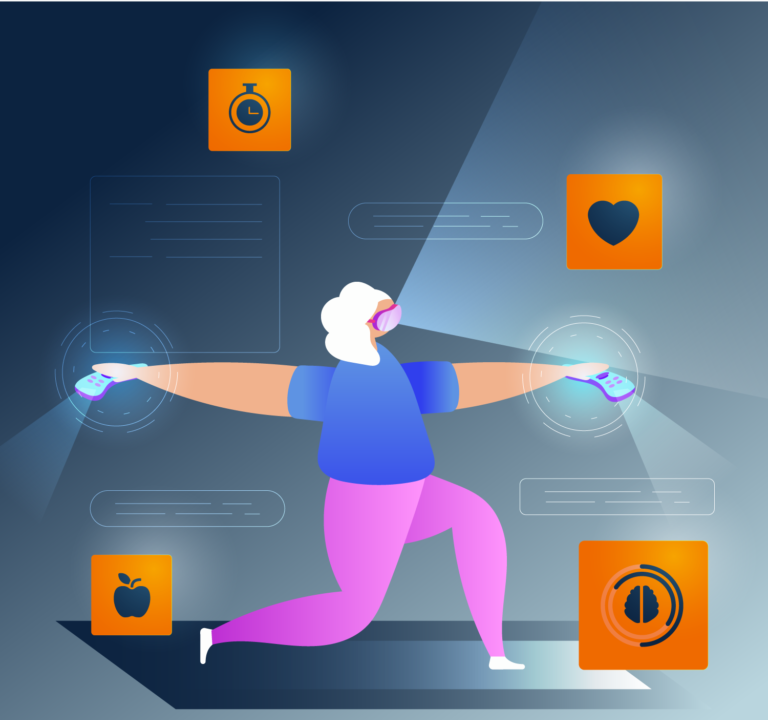POV 8 - LangLeven 10 pillars for Longevity

THE TASK
As investors, athletes and players in our community, we are constantly looking for ways to strengthen and enhance the pillars of health - namely metabolic, physical and mental wellbeing.
With this in mind, we identified the top 10 pillars of Health and longevity.
The pillars or metrics selected meet the following criteria:
give insight into many biological systems,
are sensitive and modifiable,
are directly linked to health, longevity or wellbeing, and
are easily monitored repeatably - by non-invasive consumer devices is a bonus.
AND THE NOMINEES ARE
1- Metabolic health
Largely covered in our previous POV, metabolic health is dependent on a number of processes that regulate sugar & fat homeostasis, mitochondrial health and insulin sensitivity, namely.
A downside of encompassing many processes and mechanism is that it leaves lots of potential candidate metrics to monitor. Considering current scientific knowledge and technological advances, our pick goes to (real-time) blood glucose because it mirrors insulin sensitivity - the foundation of metabolic health, and because it is highly sensitive to meals consumed, exercise type & duration, stress levels and sleep quality.
Blood glucose is easily measured by portable glucometers and by the increasingly popular continuous glucose monitors (CGM). Indeed, using CGM sensors and analytical platforms provides invaluable insights into the foods and behaviours that can cause glucose spikes and, over time, increase the risks of developing insulin resistance and type II Diabetes.
Notable CGM-based health platforms can be found here.
2- Fitness
Fitness - or more specifically aerobic or cardiorespiratory - in top gender and age quartiles decreased likelihood of developing chronic diseases and of premature aging & mortality. Average VO2max for men and women in their 50s is 32 and 23 mL/kg/min, respectively, while world level athletes' can surpass 75 mL/kg/min.
Focusing on improving VO2max is a critical element of health and longevity, as someone in the bottom quartile of VO2max for their age group is nearly four times likelier to die earlier than someone in the top quartile.
The gold standard estimation of fitness is VO2max, which is measured during a maximal ramp test done on a stationary bike or a treadmill while breathing through a gas exchanger.
Some fitness trackers will derive VO2max more conveniently and quite reliably via user's resting & maximal heart rate, age, gender, and weight. Alternatively, simple sub-maximal 6-minute walk, 3-minute step or 1 mile tests can be performed and results inputted into VO2max formulas as a way to evaluate cardiorespiratory fitness.
3- Strength
Decreased muscle mass - or sarcopenia - is common in premature aging, frailty and metabolic dysfunctions as muscles support movement, stability, protects from falls, and are highly metabolically active - think mitochondria-dense tissue.
Grip strength is one of the most reliable marker of muscle mass, strength and physical fitness.
Grip strength can be assessed using hand grip dynamometers. Maximal dead hanging time or pull-up repetitions are also good alternatives that do not require any material and that have the advantage of being effective exercises to work on to improve grip, shoulder and back strength.
4- HRV
Heart Rate Variability reflects the average variation in time between each heartbeat. It is an important marker of cardiovascular health that also informs on sleep quality, strain and physical & mental recovery - all processes influenced by balanced sympathetic to parasympathetic nervous systems.
Higher HRV values are desired as they reflect a resilient & balanced autonomic nervous system - pivotal to mental and physical health. HRV normally decreases with age, averages ranging from 70+ in 25-year-old to low-40 for individuals in their 50s.
Resting ECG or chest HR monitors are recognised methods of HRV measurement, but the recent rise in popularity of the metric is mostly due to the introduction of reliable wrist and finger HR monitors that measure HRV during sleep.
Hence, most smartwatches and wrist trackers now offer the feature, while devices such as Circular, Evie, Oura, and Happy rings or bands like Apollo Neuro and Whoop are HRV-centered.
5- Body composition
Body composition - or the sum of fat, muscle, bone and water mass - is a select marker of fitness and many chronic diseases. For instance, excessive (visceral) fat and low bone mineral density (BMD) are associated with most metabolic diseases, cancers and osteoporosis for the latter, while low muscle mass is linked to the former conditions and frailty.
Body composition varies greatly in similar body weight ranges and requires more sophisticated measurement than BMI - simply calculated by dividing body weight (kg) by the square of height (meters) - as it only draws an incomplete picture.
Body composition becomes increasingly important as one ages. Muscle mass declines steeply after age 65 and the only way to slow this decline is a combination of strength training and increased consumption of healthy proteins. BMD also declines significantly with age, particularly with menopause, increasing the risk of osteoporosis and fractures from falls.
The obvious, albeit impractical and costly alternative is undergoing regular Dual X-ray (DEXA) body scans to obtain highly defined pictures of fat, muscle and bone composition. Waist circumference measurement or using smart bio impedance scales are imperfect options that could be used until being supplanted by consumer-app offering increasingly precise body imaging using smartphone cameras and by democratisation of 360-degree body scan services such as Neko.
6- Gut health
The composition and activity of the bacteria that lines the gut - the microbiota - have an increasingly recognized importance in all pillars of health. Gut ecosystem appropriately adapted to the high demands of active lifestyle plays a front-line role in nutrient metabolism, energy production, immune system, anti-inflammatory and contribute to mental & digestive wellbeing.
Home microbiota testing kits are available from Viome and Zoe, which requires users to send fecal samples to later obtain personalised gut microbiota composition upon bacterial DNA sequencing.
Smart toilets able to analyse toilet habits and detect visual stool parameters (eg aspect, viscosity and presence of blood) or markers of gut health, colon cancer, Celiac disease and IBD are around the corner - Coprata and Stanford precision health toilet. However, devices able to analyse microbiome composition are still a thing of the future due to many technological hurdles.
7- Hormonal balance
Hormones are chemical messengers produced in the brain and peripheral endocrine glands to orchestrates many, if not all, biological functions.
Hormones can be classified within very general functional classes as such :
- sex hormones like estrogen and testosterone that primarily control menstrual cycle & lactation in female, fertility & body composition,
- fight-or-flight hormones like cortisol, dopamine, and epinephrine, that mediate stress response, mood & immune function, and
- metabolic hormones like thyroid, insulin, and glucagon that regulate, well, metabolism.
Monitoring hormone levels is a way to interrogate master regulators of biological systems at once, to get clues into the source of disturbances and devise strategies to return to appropriate ranges and ratios, if needed.
Until non-invasive biosensors are developed, consumer hormonal health monitoring has to rely on at-home blood panels such as Everlywell and SiPhoX, Dutch urine test or saliva tests.
8- Inflammation
When controlled, short periods of inflammation are one of immune system defense mechanisms that result of increased blood flow in injured areas and secretion of pro-inflammatory mediators. However, if chronically elevated, levels of inflammation form the basis of most chronic diseases.
Monitoring inflammation, via its most common and readily measurable marker CRP or C-Reactive Protein, is an effective way to detect disease development and to implement preventive strategies.
Home CRP testing kits are available from Blood FX, Everlywell, Labcorp, Lets get checked or Prima lab, namely. Continuous and non-invasive CRP biosensors are also being developed and could set fire to a whole new biosensor vertical.
9- Biological age
Contrarily to chronological age, the rate at which biological systems age is individualised and reflects the rate at which physical and biological systems age. Biological age thus gives a general overview of one's physiological health state and should have the greatest negative difference with chronological age.
Biological aging rate can be modified by lifestyle and physical activity measures, which makes it a good indicator to monitor regularly.
Biological age is an aggregate score of DNA damage (epigenetics) & chromosome telomere length, skin photo aging, and blood metabolic, cardiovascular, liver, & kidney status.
The following home testing solutions derive biological age from proprietary combinations of the above-mentioned parameters - Epiage, myDNAge, Tally Health, Thorne, TruAge, and Viome.
10- Mental fitness
Mental fitness - defined here as wellbeing and cognition - is a pillar of health that is too often ignored, but maintaining optimal mental fitness should appear among priorities of anyone seeking wellness and longevity.
Inherent to its abstract nature, mental health can hardly be directly assess by objective biomarkers other than wellbeing questionnaires or neuropsychological assessments (e.g. MMSE, MOCA) that can be completed regularly by anyone over the age of 65. Alternatively, balancing and spatial orientation capabilities - functions of vestibular function - are good markers of cognition and dementia. Mental fitness status can also be inferred from a combination of HR, hormonal balance, or sleep quality.
Feeling of wellbeing can be improved, and normal cognitive decline can be slowed by many habits such as : accomplishing demanding tasks & and setting long-term goals, by reading or solving (mathematical) puzzles, by completing breathing, mindfulness or meditation sessions, and by socializing.
Other notable candidates - Blood pressure, body temperature, triglycerides & Lp(a), vitamin D, and liver enzymes
a word of advice
Now is the time to engage and invest into your health and longevity.
General awareness and willingness to pay for prevention is increasing at the same time as consumer fitness & digital health technologies are blooming and able to track a wide range of metrics.
Our word of advice is to take advantage of the situation and use consumer technologies and services to
- assess your current status,
- devise lifestyle & exercise strategies in areas where improvement is required,
- regularly monitor your health status to flag possible deviations from your baselines early, and
- readjust accordingly.
As you age, aim to maintain as many of your longevity pillars in the top percentiles for your sex and age.
And remember, these pillars are a reflection of the work, commitment and most importantly, the pleasure you put into supporting these pillars every day.
Now, let's play!
VO2max, strength and body composition are integrators of the work it took to get to those numbers.
The work is the secret sauce. It is what protects against diseases and early aging.
Stay tuned for more





























